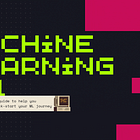Previous lesson:
Machine learning is a huge field, but at its core, almost every model falls into one of two major categories: supervised learning and unsupervised learning. These two approaches define how a model learns from data and what kind of tasks it can handle.
If you've ever wondered why some AI models can recognize spam emails while others can find hidden patterns in customer behavior, this lesson will make everything clear. We’ll break down these two learning types, explore their applications, and help you determine which one best fits your project.
What is Supervised Learning?
Supervised learning is like having a teacher who provides the correct answers while training a model. The algorithm learns from a dataset that contains both inputs (features) and correct outputs (labels). The goal is to find patterns in the data so that the model can accurately predict outcomes for new, unseen data.
How It Works:
Collect Labeled Data → The dataset consists of input-output pairs (e.g., images of cats labeled as "cat").
Train the Model → The model learns from these labeled examples using a mathematical function.
Make Predictions → Once trained, the model predicts outputs for new inputs.
Evaluate and Improve → The model’s performance is measured and improved using optimization techniques.
Examples of Supervised Learning:
Spam Detection → Classifying emails as spam or not spam.
Medical Diagnosis → Predicting whether a tumor is malignant or benign based on medical images.
Stock Price Prediction → Forecasting future stock prices using historical data.
Speech Recognition → Converting spoken words into text.
Common Supervised Learning Algorithms:
Linear Regression → Predicts continuous values (e.g., house prices).
Logistic Regression → Used for binary classification (e.g., spam vs. not spam).
Decision Trees & Random Forests → Classify data by splitting it into branches.
Neural Networks → Power deep learning models for complex tasks like image and speech recognition.
What is Unsupervised Learning?
Unsupervised learning is like exploring a new city without a map. The model is given unlabeled data and is tasked with finding patterns, structures, or relationships on its own, without predefined labels.
How It Works
Collect Unlabeled Data → The dataset contains only inputs, without corresponding outputs.
Find Patterns → The model detects similarities and clusters within the data.
Group Similar Data Points → It organizes the data into meaningful structures without explicit instructions.
Extract Insights → The results help reveal hidden trends and structures in data.
Examples of Unsupervised Learning
Customer Segmentation → Grouping customers based on purchasing behavior for targeted marketing.
Anomaly Detection → Identifying fraudulent transactions in banking.
Topic Modeling → Automatically grouping news articles into different topics.
Genetics Research → Finding patterns in DNA sequences.
Common Unsupervised Learning Algorithms
K-Means Clustering → Groups data into clusters based on similarity.
Hierarchical Clustering → Builds a tree of clusters from data.
Principal Component Analysis (PCA) → Reduces data dimensionality while preserving patterns.
Autoencoders → Neural networks that learn efficient data representations.
Key Differences
Labels Provided
Supervised learning requires labeled data with known answers.
Unsupervised learning works with unlabeled data, finding patterns on its own.
Goal
Supervised learning is used for making predictions (e.g., classifying emails as spam or not).
Unsupervised learning is used for finding hidden structures (e.g., grouping customers by purchasing habits).
Example Use Cases
Supervised learning is ideal for classification (e.g., fraud detection) and regression (e.g., predicting house prices).
Unsupervised learning is used for clustering (e.g., customer segmentation) and dimensionality reduction (e.g., PCA).
Common Algorithms
Supervised learning techniques include linear regression, decision trees, and neural networks.
Unsupervised learning relies on clustering methods like K-Means, hierarchical clustering, and PCA.
Which One Should You Use?
The choice between supervised and unsupervised learning depends on your data and your goal.
Use Supervised Learning if:
✔️ You have labeled data.
✔️ You want to predict specific outcomes (e.g., fraud detection, sentiment analysis). ✔️ You need precise classifications or numerical predictions.
Use Unsupervised Learning if:
✔️ You only have raw, unlabeled data.
✔️ You want to discover hidden relationships and patterns.
✔️ You are performing exploratory analysis (e.g., market segmentation, anomaly detection).
Beyond Supervised & Unsupervised Learning
While these are the two main categories, there are also semi-supervised and reinforcement learning approaches.
Semi-Supervised Learning → A mix of both; a small amount of labeled data helps guide an unsupervised model.
Reinforcement Learning → Models learn by trial and error through rewards (used in robotics, game AI, and self-driving cars).
A Real-World Example
Let’s consider a music streaming service like Spotify or Apple Music.
Supervised Learning Example: The service classifies songs into genres (pop, rock, jazz) based on labeled user input.
Unsupervised Learning Example: The service clusters users with similar listening patterns to recommend personalized playlists.
Both methods work together. Supervised learning ensures accurate classification, while unsupervised learning detects hidden trends in user preferences.
Understanding the Learning Process
Both supervised and unsupervised learning are essential tools in machine learning, each suited for different types of problems. If your goal is prediction, supervised learning is the way to go. If you’re exploring data and looking for hidden structures, unsupervised learning is your best bet.
In the next lesson, we’ll start applying supervised learning techniques in TensorFlow, showing you how to build models that can learn from labeled data.






